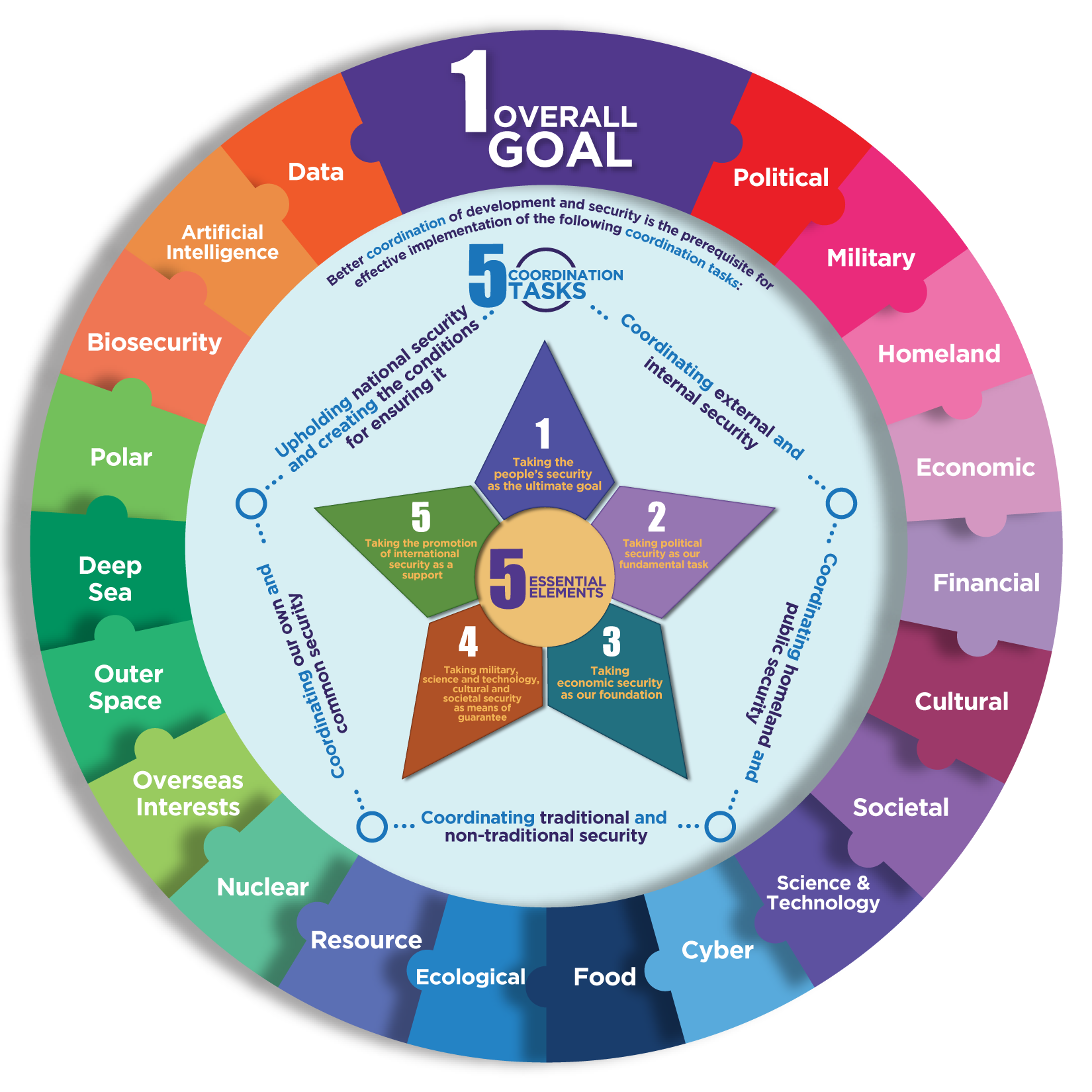
On 15 April 2014, General Secretary Xi Jinping originated a holistic approach to national security. The approach provides a systematic, holistic, logical and integrated scientific theoretical framework with fundamental guidance and guide for action towards effective tackling of the various risks and challenges arising from major changes of the national security situation in the new era.
Security of our country and the people can only be safeguarded when a holistic approach to national security is fully and faithfully implemented. The essence can be summed up as One Overall Goal, Five Essential Elements and Five Coordination Tasks.
Security of our country and the people can only be safeguarded when a holistic approach to national security is fully and faithfully implemented. The essence can be summed up as One Overall Goal, Five Essential Elements and Five Coordination Tasks.
One Overall Goal
A holistic approach to national security stresses the need to construe and put into practice national security from a macro perspective holistically. The highlight is the concept of "mega security", which currently encompasses twenty major interconnected fields.
Traditional fields:
Non-traditional fields:
Economic Security
,
Financial Security
,
Cultural Security
,
Societal Security
,
Science and Technology Security
,
Cybersecurity
,
Food Security
,
Ecological Security
,
Resource Security
,
Nuclear Security
,
Overseas Interests Security
,
Outer Space Security
,
Deep Sea Security
,
Polar Security
,
Biosecurity
,
Artificial Intelligence Security
,
Data Security
.

